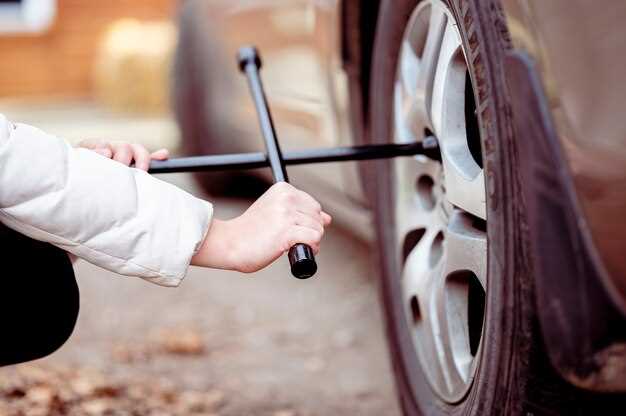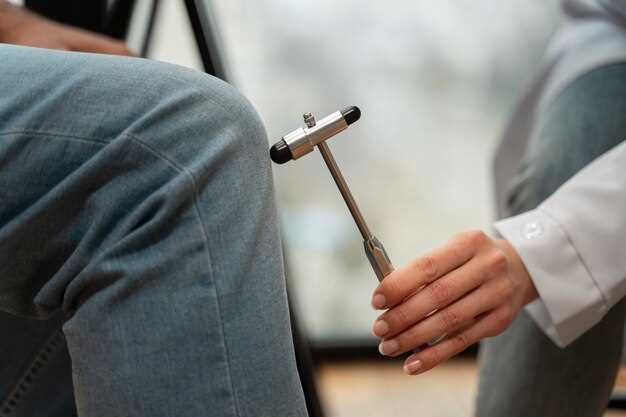
The suspension system is a critical component of any vehicle, playing a vital role in ensuring a smooth ride and maintaining control. When this system is functioning properly, it absorbs shocks from the road, allowing for better handling and comfort. However, over time and due to various driving conditions, parts of the suspension can wear out or become damaged, leading to a range of issues that can affect your vehicle’s performance.
Recognizing the signs of a failing suspension system is essential for avoiding more significant problems down the line. Ignoring these warning signs can lead to uneven tire wear, decreased fuel efficiency, and compromised safety while driving. Understanding these symptoms can help you address potential issues promptly, preventing costly repairs and enhancing your driving experience.
Common indicators that your suspension system may require immediate attention include unusual noises while driving, a bumpy ride, or difficulty handling the steering. Each of these signs represents a potential issue that should not be overlooked. In this article, we will explore these signs in detail and provide guidance on what to look for to ensure your vehicle remains safe and reliable on the road.
Unusual Noises When Driving Over Bumps

Experiencing unusual noises when driving over bumps can be a clear indicator that your vehicle’s suspension system requires immediate attention. Various sounds may arise from different components of the suspension system, each signaling a particular issue. Below are common noises and their potential causes:
- Clunking Sounds:
This noise may indicate worn or damaged struts or shocks. Over time, the internal components may degrade, leading to a failure in dampening the impact of road irregularities.
- Rattling Noises:
A rattling sound during bumps often suggests loose or broken components, such as sway bar links or bushings. This can compromise stability and handling.
- Squeaking or Creaking:
Squeaks can arise from worn out bushings or joints. If they are made of rubber, they may dry out and lose their ability to absorb shocks, leading to increased noise.
- Grinding Sounds:
This noise may indicate a problem with the coil springs or struts. If the coil spring is broken, it can create a grinding sound against surrounding parts as it shifts during movement.
If you notice any of these sounds, it is essential to have your suspension system inspected by a qualified mechanic. Ignoring these warning signs can lead to further damage and costly repairs. Addressing these issues promptly ensures not only your vehicle’s reliability but also your safety on the road.
Increased Vehicle Vibration at Higher Speeds
Experiencing increased vibration in your vehicle while driving at higher speeds can be a significant indicator that your suspension system requires immediate attention. This phenomenon often stems from various issues within the suspension components, such as worn shocks, struts, or bushings.
Worn Shocks and Struts: Over time, shocks and struts can lose their ability to effectively dampen road vibrations. When these components are compromised, they fail to stabilize the vehicle, leading to excessive oscillation at elevated speeds. If you notice that the ride becomes increasingly uncomfortable as speed increases, it may be time to replace these critical components.
Imbalanced Tires: Another common cause of heightened vibration is improperly balanced tires. If tires are unevenly worn or misaligned, the vehicle can vibrate significantly when traveling at higher speeds. Regular tire maintenance and alignment checks can mitigate this issue and keep your vehicle running smoothly.
Worn Bushings: The bushings in the suspension system play a vital role in absorbing shocks and providing a smooth ride. When these rubber components degrade, they can create a loose connection between various parts of the suspension, resulting in increased vibrations. Inspecting and replacing worn bushings can enhance both ride quality and handling.
Ignoring the signs of increased vibration can lead to more significant issues down the road, as it may affect your vehicle’s steering and stability. If you notice this symptom, it’s advisable to consult with a professional mechanic to perform a thorough inspection of your suspension system. Addressing these problems promptly can ensure your safety and prolong the life of your vehicle.
Unstable Handling During Turns or Lane Changes
One of the most critical signs that your suspension system may require immediate attention is unstable handling during turns or lane changes. When your vehicle feels like it’s swaying or leaning excessively, it indicates that the suspension components are struggling to maintain proper tire contact with the road surface.
During tight turns or shifting lanes, your suspension should provide a stable platform that minimizes body roll and keeps the tires firmly planted. If you experience excessive body roll, the car may feel as if it’s tipping over, creating a dangerous situation where control is compromised. This can lead to a lack of responsiveness and increased braking distances.
Suspension issues like worn-out shock absorbers, struts, or springs can lead to these handling problems. For instance, degraded shock absorbers can no longer absorb road imperfections effectively, resulting in a bouncy ride and diminished stability. Furthermore, damaged bushings or links within the suspension system can create looseness, causing erratic movements that detract from the vehicle’s overall handling.
It is paramount to address these symptoms promptly, as they not only affect driving comfort but also significantly impact safety. Ignoring unstable handling can lead to tire wear and potentially hazardous situations, especially at higher speeds or during emergency maneuvers. If you observe any signs of instability, it is advisable to have your suspension system inspected by a qualified mechanic without delay.
Excessive Wear on Tires
Excessive tire wear is a significant indicator that your vehicle’s suspension system may require immediate attention. Tires are designed to provide a reliable grip on the road, and uneven or rapid wear can compromise safety and performance.
There are several patterns of tire wear that can signal issues with the suspension system:
| Wear Pattern | Possible Cause |
|---|---|
| Uneven Wear on One Side | Misalignment or worn control arms |
| Center Wear | Over-inflation or stiff suspension |
| Edge Wear | Under-inflation or worn shock absorbers |
| Camber Wear | Improper camber angle due to suspension damage |
| Patchy Wear | Worn-out bushings or ball joints |
To avoid dangerous driving conditions, it is essential to regularly inspect your tires for signs of excessive wear. If you notice any irregularities, consult a professional technician to assess your suspension system and address the underlying issues. Prompt repairs can enhance tire longevity and ensure optimal handling.
Fluid Leaks Around Shock Absorbers
Fluid leaks around shock absorbers are a significant indicator that your vehicle’s suspension system requires immediate attention. Shock absorbers are essential for maintaining vehicle stability and providing a smooth ride by controlling the impact and rebound of springs. When fluid escapes from these components, their effectiveness diminishes drastically.
The most common signs of fluid leaks include visible wet spots or puddles on the ground beneath the shock absorbers or a greasy residue on the shocks themselves. This fluid is typically hydraulic oil that is crucial for the shock absorbers’ operation. If left unaddressed, a fluid leak can lead to reduced performance, poor handling, and increased wear on other suspension components.
To pinpoint the source of the leak, conduct a thorough inspection of the shock absorbers. Look for any signs of wear or damage, such as dents, cracks, or rust. It’s important to check both front and rear shock absorbers, as leaks can occur in any part of the vehicle. If you observe any of these issues, a replacement or repair is necessary to restore optimal function to your suspension system.
Ignoring fluid leaks can result in further damage and more costly repairs down the line. Therefore, it is crucial to have any suspected leak evaluated by a professional mechanic as soon as possible. Timely intervention not only ensures safety while driving but also prolongs the lifespan of the entire suspension system.
Visible Damage to Suspension Components
The suspension system of your vehicle is crucial for handling, comfort, and safety. Observing visible damage to suspension components is a solid indication that immediate repair is necessary. Here are some signs to look out for:
- Damaged Shock Absorbers: Inspect for oil leaks or physical dents. Worn shocks lead to reduced stability and increased stopping distance.
- Broken Springs: Look for sagging or unequal heights in your vehicle. A broken spring can significantly impact ride quality and necessitate immediate replacement.
- Worn Bushings: Examine control arm bushings for cracks or deterioration. Worn bushings can cause poor alignment and affect handling.
- Cracked Ball Joints: Inspect ball joints for visible cracks or excessive play. Worn ball joints can lead to steering instability and increased tire wear.
- Dented or Rusted Components: Look for any signs of rust or dents on the framework of the suspension. Corrosion can compromise structural integrity and should be addressed promptly.
- Damage to Strut Mounts: Check strut mounts for signs of wear or misalignment, which can add noise and poor performance to your driving experience.
Regular checks of suspension components can prevent further damage and help maintain vehicle safety. If you observe any of these visible damages, it’s time to consult a professional for repair or replacement.















